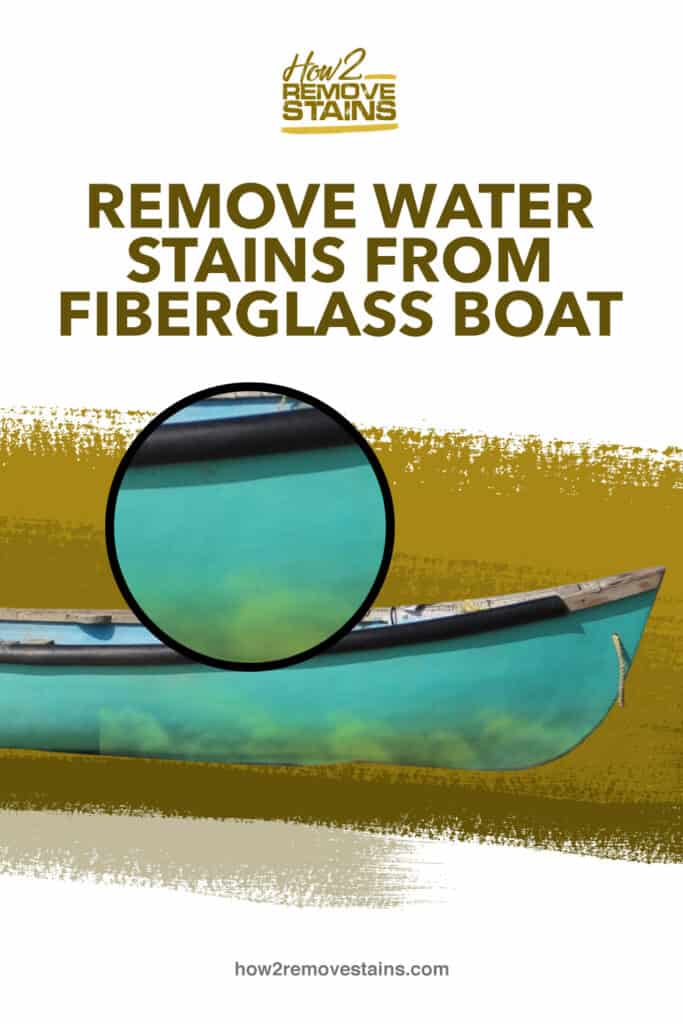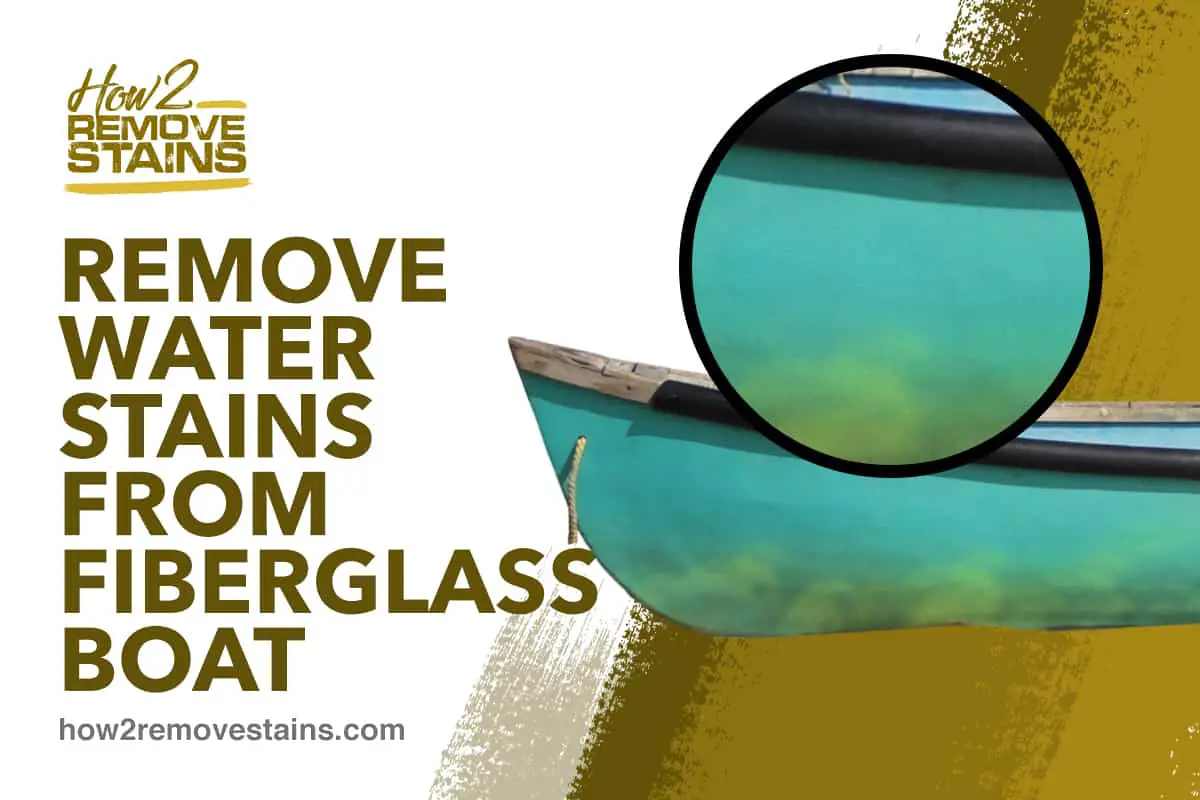Water stains have been an issue faced by many boat owners. No matter how much care and maintenance is provided, if your boat is not on a lift, you will always find stubborn water stains that are difficult to remove. Since a fiberglass boat is a substantial investment, it is vital to do your best to ensure that it stays clean, pristine and safe as much as possible.
Fiberglass is known for its superior rigidity and strength, but it is not immune to stains, particularly water stains that quickly accumulate over time. It is important to note that the permeable nature of the fiberglass gel coat, which is meant to protect it, makes it even vulnerable to damage or in any case abrasion from ultraviolet radiation. Read further to learn ways on how to remove water stains from fiberglass boat.
Table of Contents
Effective methods on how to remove water stains from fiberglass boat
A fiberglass boat requires proper maintenance to prevent it from looking dull or unappealing. Let us now take a look at these steps on how to remove water stains from fiberglass boat.
- Regular cleaning. Aside from the water stains, cleaning your boat regularly will lessen the chances of accidents such as slips. When your boat is not on the water, it is best to take time to wash the hull deck and sides thoroughly using any soap that you normally use for dishwashing. This will prevent water stains from accumulating. In case you cannot wash your boat every time you use it, make sure that you rinse off the saltwater on the fiberglass hull as well as other parts of the boat. Doing so will prevent the degenerative effect of saltwater on your fiberglass boat.
- Scrubbing off the stains. Once you see a stain starting to form, you must scrub it off right away. The earlier it is dealt with, the better chances of removing it effectively. If the stain is still fresh or has not been present for a long time, use a solution by mixing a cup of vinegar with a gallon of water. Pour into a spray bottle and apply it to the site. Wait for a minute and wipe it off with a cloth. If the stain is stubborn, spritz on the spot again and leave in place for a longer time before wiping it off.
- Using a cleaning product. When faced with stubborn stains, you need to use a chemical cleaning agent. If the water and vinegar solution was not effective, you might use other products such as CLR.
- Waxing the hull. After thoroughly cleaning the fiberglass hull, you must apply wax. The reason why you have to apply wax is that when cleaning or scrubbing off stains, there is a tendency that the protective wax coating will be affected. Remember that the application of wax will make cleaning future stains easier and faster.
[crp]
Facts about CLR
CLR is a widely used household cleaner that is specially designed to clean heavy-duty stains such as calcium, rust, and lime. Generally, these stains are brought about by the build-up of water and the continuous dripping of minerals in the water.
Over time, this results in an undesirable build-up in bathtubs or sinks as well as on fiberglass surfaces. As a cleaner, it is potent which is why it is important to follow the instructions as indicated. One of the main advantages of this cleaner that makes it stand out from the rest is that it gets rid of stains effectively.
The main ingredients in CLR include water, gluconic acid, lactic acid, citric acid, glycolic acid, surfactants, and sulfamic acid. These components are specially designed to get rid of the calcium, rust, and lime that accumulate on surfaces.
How to properly use CLR
CLR is highly effective in cleaning various hard surfaces such as porcelain tubs, sinks or toilets as well as brick or even fiberglass surfaces. It can be an all-around household cleaner but can be detrimental if not used properly. Using CLR correctly is vital to ensure safety as well as achieving the best results.
- Wear heavy-duty rubber gloves and use a face mask.
- Pour or spray CLR onto a rag, sponge or cloth.
- Apply on the surface to clean, making sure that the stain is saturated.
- Leave it in place for 2 minutes to allow the product to dissolve the lime, rust or calcium.
- Thoroughly rinse with cold water.
- Dry the surface with a clean towel or cloth.
Does CLR damage fiber glass?
Throughout the years, CLR has been utilized to clean fiberglass material. Generally, it is safe to use on this type of surface.
If you are going to use fiberglass surfaces or materials, start with a mixture of CLR and progress to full strength if necessary to thoroughly clean the surface for deep-seated dirt or marks.
Can you use CLR on fiberglass boats?
CLR can be used to clean dirt that has accumulated on stainless steel components such as the boat ladder, cup holders, cleats and connector flanges. It can also be used to ensure that the fiberglass body of your boat is clean and smooth.
Remember that when your boat hull is clean, it helps lessen the drag to ensure a smooth surface so that the boat can readily move through the water. Simply combine equal amounts of CLR with warm water and apply directly on the surface and rinse thoroughly with cold water.
What happens if you get CLR on your skin?
When CLR comes in contact with your skin, eyes, mucous membranes and respiratory tract, it can be irritating. The cleaning agent can be harmful or even deadly if ingested. When it is used, make sure that there is adequate ventilation and avoid inhaling the mist or dust. The container must be securely closed when not in use.
Once the skin is exposed to CLR, some of the potential effects include skin irritation while prolonged exposure can trigger dermatitis and itchiness.
If the eyes were exposed, it can cause severe irritation and blurred vision. Take note that the effects might vary depending on the length of exposure, the concentration of the solution and if first aid care was provided. In case it was inhaled, it can cause irritation, headache, difficulty breathing, and dizziness. Lastly, when CLR is ingested, it can result in oral burns, GI disturbance, and vomiting.
Final thoughts
When your fiberglass boat ends up with unsightly water stains, you must remove them immediately. The best way to prevent these stains in the first place is to regularly clean your boat. With the methods discussed on how to remove water stains from fiberglass boat, your boat will be free from stains and looking good as new.


